A ceiling fan is an effective option for cooling indoor air. It works more economically than popular air conditioning and provides comfort at elevated temperatures. The device is safe for humans, because does not cause colds from hypothermia. The unit works effectively in open areas of restaurants, in industrial workshops and warehouses, where it is impractical to use air conditioning.
How the ceiling fan works
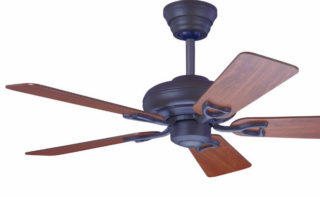
Air movement is created in the room, while heat is dissipated from the human skin and a cooling effect is created. The ambient temperature remains the same, so there is no need to adjust to stressful changes.
The fan consists of the following elements:
- Electrical engine;
- case box;
- blades;
- bracket or bracket.
The unit is mounted so that foreign structures and objects, for example, chandeliers, door leaves, furniture, ceiling beams, do not fall into the rotation zone.
Efficiency parameters
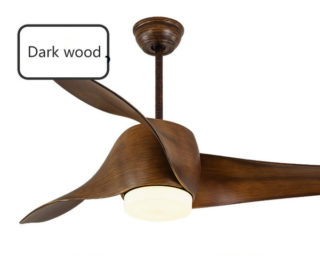
The horizontal angle of the blades determines the productivity, which increases with increasing ramp. This creates an additional load on the engine.
The angle of inclination vertically affects the amount of captured space in the room. If the angle between the barrel and the blades is less than 90 °, the extreme points of the room are cooled, and the effect of the flow is weakened directly under the fan.
The humidity of the microclimate affects performance. In rooms with a lower value, the fan gives a lower efficiency, and in damp rooms, the cooling effect is more pronounced.
Ceiling Fan Application
The units create a slight wind effect, this method is not expensive and is used in various circumstances. The reverse function allows you to switch the operating modes, which are provided for summer and winter.
In models of axial rotation, the air flow is parallel to the central axis and moves due to the positive angle of rotation of the impeller. Centrifugal fans drive the flow with oncoming blades and direct it radially relative to the rotational axis under the action of centripetal force.
In the summer
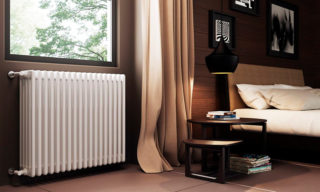
In summer, the air flow from the device is directed downward. The blades rotate counterclockwise when viewed upward from the center of the impeller. Ceiling units provide coolness by blowing over the human body.
A hanging fan is one of the few devices, besides portable appliances, that creates comfort on a summer open-air veranda or in a garden gazebo. There are combined structures with a chandelier, which simultaneously cool and illuminate the territory of street buildings.
In winter
In winter, a stratification of the warm and cold stream is observed, the first rises to the ceiling, and the fresh one accumulates in the lower part of the room.In high premises of sales areas (up to 6 m), the temperature difference is 8 - 10 ° C, therefore, the cost of heating the lower zone of the passage of people increases.
The costs increase even more if the upper heated layers go into the exhaust ventilation. A vane ceiling fan blows warm air horizontally across the ceiling, then from top to bottom along the walls. The temperature levels off, heating costs are reduced, and people in the work area do not experience any discomfort from the cold.
Options for selection
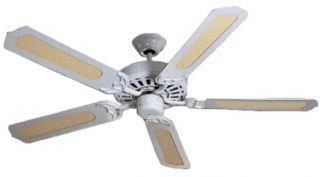
The diameter of the blades plays a role. In a large room or hall, several units are installed in order to achieve the desired effect.
The size is selected from the parameters of the room and purpose:
- small rooms (2.5 x 3.0 m), bathrooms, kitchens, bathrooms - 30 '(762 mm);
- medium rooms (3.6 x 5.0 m) - 42` (1066 mm);
- large areas (5.5 x 6.0 m) - 52` (1320 mm).
Height is taken into account, so devices on a long shaft are not suitable for low ceilings. Power affects the performance of overhead equipment, but strong units require a separate power supply branch.
Noise emitted
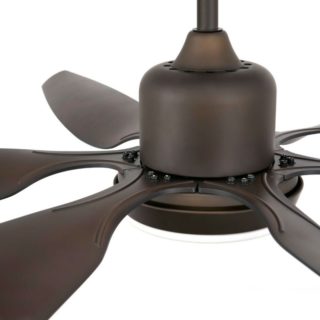
Sometimes the fans hum and cause discomfort for those present. To make it quieter, you need to balance the units.
Procedure order:
- turn off the device and wait for the impeller to stop;
- check and tighten the attachments of the blades;
- remove dust from the surface, especially in the upper area (the layer presses on the bearings and causes a squeaking sound);
- check the rubber gaskets in the attachment point of the impeller to the metal flange;
- the blades are placed on the same level using a balancing kit that is available in stores, the kit is used according to the instructions.
There is an indoor ceiling fan with a DC motor. These units are quiet and quiet.
Direction of speed and rotation
The direction of movement of the impeller determines the movement of the air flow through the room. Summer and winter operating modes depend on this.
Reverse suspended units are divided into types:
- with manual switching of the direction of rotation;
- using the remote control.
In the first models, the switch is located on the body, while the handle is placed down for cooling, and the handle is placed up to mix heated and cold air.
Blade type and shape
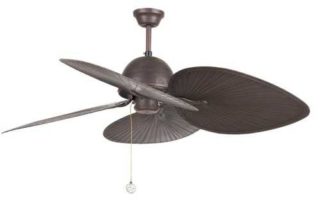
The device moves more air with increasing wing area. But the wide surface reduces the gap between the blades and reduces the flow rate. If the fan has more than six flat elements or they have a peculiar palm tree shape, the installation does not always cope with shoveling the air mass.
The performance is influenced by the number of blades in the design. For example, a three-wing device will mix more volume than a four-wing device when operating at the same speed.
Possibility of replacing the blades
The impeller is changed if the device does not drive air flows well and does not cope with the task.
To change the blades, you need to disassemble the fan:
- the front mesh is unscrewed and removed;
- the propeller is disconnected, which is fastened with a nut with a left-hand thread;
- the rear safety net is removed;
- the box fasteners are unscrewed, the engine is lubricated and a new impeller is installed.
The rotation of the central rod is checked, the fan casing is mounted in reverse order.
Rotational speed
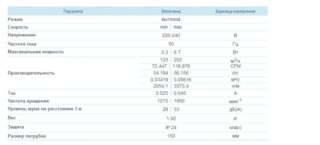
The impeller swing speed indicates the speed of the fan motor. With an increase in the number of turns over a period of time, the blowing efficiency increases. The speed regulators are used, which include a backlight with a button and a handle for coordination.The device shows the working or non-working state of the fan.
The regulator allows you to stop operation or turn on the outboard turbine without changing the speed and change the speed without turning off the device. One regulator can be installed on two units, but the power of the devices should not exceed that of the coordinator.
Power
Productivity shows the amount of air mass transported by the unit for 1 hour of operation, measured in m³ / h. For large rooms, powerful appliances are installed to achieve air movement in distant points and corner areas.
The power of fans with a large wing span is always higher because extra force is required to rotate long arms. Powerful fans consume more electricity from the mains.
Additional functions
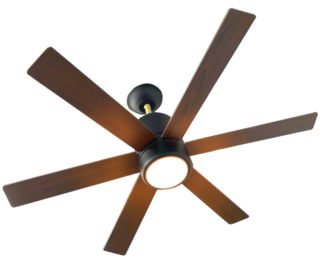
Most implements are equipped with height adjustment, tilt, horizontal and vertical adjustment and an automatic turn function.
Additional devices in outboard fans:
- An electronic timer sets the work by the hour, programs the mode for a day or a week, changes occur automatically.
- In the chandelier-fans, a low-power battery is installed, which does not provide the rotation of the blades, but guarantees lighting for two hours in case of a power outage.
- Built-in motion sensors trigger the unit when people enter the room.
An automatic moisture reader is installed in the bath for an extraordinary start. The models are supplied with a high-frequency ionizer and an atmosphere fragrance.
Code of practice
SNiP 2.09.04 - 1987 "Administrative and domestic buildings" regulates the mandatory installation of ceiling units in regions where the outside temperature in summer is higher than + 25 ° C.
Instructions for handling the device:
- do not touch the fan with wet hands or stop the blades when the engine is running;
- small children are not allowed to use the machine;
- in the presence of flammable alcohol, gasoline, acetone vapors in the air, the fan does not turn on;
- the blades should be installed no lower than 2.3 m from the floor in the room.
For use, it is required to ground the fan parts. The power of the device must match the capacity of the power supply.
Ceiling Fan Benefits
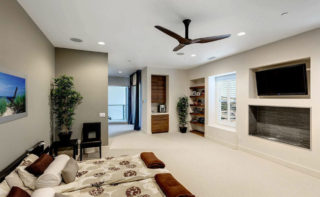
Suspended coolers are chosen for their ease of installation and low cost compared to installing an air conditioning system. Fans consume little electricity, the power is comparable to that of an incandescent light bulb.
The ceiling type does not take up much space, the wires do not stretch through the room, and there is no need to install bulky wall-mounted control units. A wide range of models makes it available to all categories of buyers.








